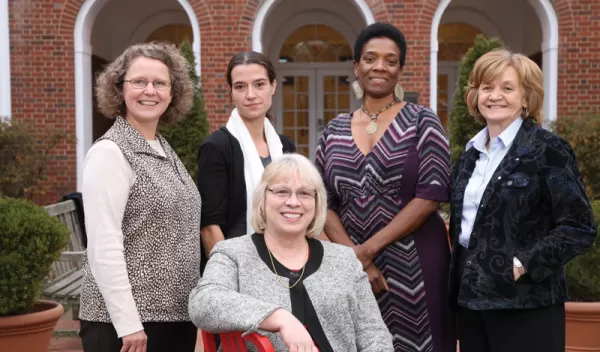
Encouraging diversity in computer science education
The percentage of women getting bachelor's degrees in computer science has declined from a peak of 35 to 40 percent in the mid-1980s to approximately 16 percent today. This decrease has occurred in spite of recent reports that rank computer science near the top of college majors for salary potential.
To help reverse this downward trend and restore gender balance to the field, Joanne McGrath Cohoon, an associate professor of Science, Technology & Society at the University of Virginia, began collaborating with others to reach high school computer science teachers in 2008. A sociologist by training, Cohoon works to encourage more young women to go into computer science, where jobs are plentiful and careers are lucrative and intellectually engaging.
"The need is drastic," said Cohoon. "In terms of workforce need, the Bureau of Labor Statistics predicts the demand is going to be many times more than the number of students prepared to work in computing."
Through a grant from the National Science Foundation (NSF), Cohoon and her husband, James Cohoon, an associate professor of computer science at the University of Virginia, created summer programs known as Tapestry workshops for high school teachers.
The Cohoons lead the workshops, engaging teachers with pedagogically appropriate ways to diversify their computer science classrooms and thus increase the number of girls and minorities participating in computer science courses.
Joanne Cohoon says students choose their aspirations based on three factors: interest, confidence and a sense of belonging. Cultivating interest and confidence is valuable, but it doesn't guarantee the diversity one would hope for.
"Active recruitment is essential to getting them in," she said. "You have to have a good class that appeals to a broad range of students."
Joanne Cohoon expresses concern that girls are often expected to have interests that are fundamentally different from boys. She believes that if you want to broaden participation in computer science, you have to incorporate topics that interest both girls and boys. She talks about attracting a broader range of students by using the social value of computing, like helping handicapped people navigate their world, or assisting in places where there has been a major catastrophe.
She doesn't think anyone should say, "Girls, you can come to computing to do this," since these interests can be equally attractive to boys.
The Tapestry workshops focus on pedagogy for recruiting and also maintaining a gender balance, practices that translate into better teaching overall, according to workshop participants.
When Seth Reichelson, a teacher at Lake Brantley High School outside Orlando, Fla., attended his first Tapestry workshop several years ago, he thought he had a "pretty good product."
"Before attending the Tapestry workshops, some of the stuff that I thought was a great promotion for my class was in reality actually driving away students," he said. "After my 16th Tapestry workshop, I'm still making mistakes but I'm gradually getting better every day."
Reichelson says that he became a better teacher and learned how to measure success. He began to focus on growth as the goal for each student--looking at where the student started and ended--rather than any homogenous standard.
The students in his non-magnet public high school have embraced the class, and he has been successful teaching coding to middle school students, girl scouts, elementary students and his most proud moment--the Autistic Spectrum Students.
Reichelson now teaches over 180 computer science students, with girls making up a third of the class. "My goal is to make Lake Brantley a place where everyone codes," he said.
Melody Hagaman, of Centennial High School in Las Cruces, N.M., had 32 students and a "decent" gender balance in her computer science classes when she first attended a Tapestry workshop. Afterward, she began to actively recruit girls and minority students, using a strategy she hadn't even thought about before the workshop. She approaches groups of students--girls or underrepresented minorities--and talks to them about the collaborative nature of the class and the opportunities to work with friends to create programs and applications based on their interests.
"I find they are much more likely to sign up as a group than individually," she commented.
What she tried was extremely effective. Her program grew to over 150 students with 33 percent girls.
To make her classes more engaging, she incorporated logic problems into the class. She has noticed that students really enjoy the process and tend to be more willing to solve their own problems before asking for help.
"This has given students more ownership over their learning," she added. She also noted that these problem solving skills have spilled over into other content areas as well. Not only do the problems help to engage the students, they have also been a recruitment booster. "I love logic problems!" she said.
Since the first one, there have been over 17 Tapestry workshops held at the University of Virginia and other institutions. In developing and sustaining the workshops, NSF has played a key role, according to Joanne Cohoon.
"NSF has been absolutely essential," she said. "They helped develop a community of people who are active in this area. None of this would have happened without their efforts."
